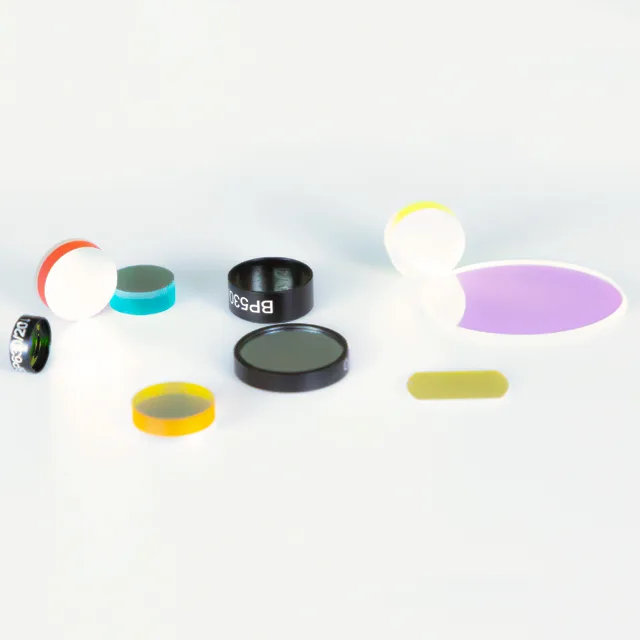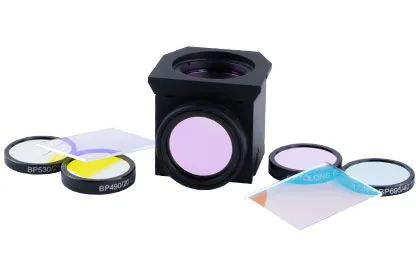Optical filters play a key role in a variety of applications by selectively transmitting or blocking specific wavelengths of light. These optical filters are widely used in scientific research, photography, and many industrial processes.
This article will take an in-depth look at the types of optical filters, their uses, how to use them, how to clean them, and where to buy them. Let’s read on.
What Are Optical Filters?

An optical filter is a device that allows certain wavelengths of light to pass through while blocking others. They are useful for controlling the spectral properties of light in a variety of applications, including microscopy, spectroscopy, photography, and lighting systems.
Filters can be made of glass, plastic, or other optical materials, and they can be coated or dyed to achieve the desired filtering effect.
Types of Optical Filters
There are several types of optical filters, each designed for specific applications and properties:
Neutral Density Filters
Neutral density (ND) filters uniformly reduce the intensity of all wavelengths of light without altering the color balance. They are often used in photography to prevent overexposure, allowing for longer exposure times or wider apertures in bright conditions.
Dichroic Filters
Dichroic filters, also known as interference filters, use multiple thin film layers to reflect unwanted wavelengths and transmit desired wavelengths. These filters are highly efficient and can be used in applications that require precise selection of wavelengths, such as fluorescence microscopy and laser systems.
Bandpass Filters
Bandpass filters allow light within a specific wavelength range to pass while blocking wavelengths outside that range. These filters are used in applications such as spectral imaging and analytical chemistry to isolate specific wavelength bands of interest.
Shortpass Filters
Shortpass filters transmit wavelengths shorter than the specified cutoff wavelength and block longer wavelengths. They are useful in applications that require isolation of shorter wavelength light, such as ultraviolet and blue light detection.
Longpass Filters
In contrast, longpass filters transmit wavelengths longer than the specified cutoff wavelength and block shorter wavelengths. These filters are often used in fluorescence imaging and other applications where longer wavelengths need to be isolated.
You can click to learn: Long pass and short pass filte
Absorption Filters
Absorption filters use materials that absorb specific wavelengths of light while allowing other wavelengths to pass. They are often used in photography and stage lighting to produce specific color effects.
Notch Filters
Notch filters are designed to block a narrow band of wavelengths and transmit all other wavelengths. These filters are often used in applications such as laser protection and Raman spectroscopy to block specific laser lines while allowing other wavelengths to pass.
Color Filters
Color filters are commonly used in photography and lighting to transmit certain colors of light while blocking others. They are often used to enhance contrast or produce special effects.
By understanding these different types of filters, I believe you can make some judgments about choosing a suitable type of optical filter for your application.
Uses of Optical Filters
Optical filters have various uses in different fields:
Spectral Control: Filters are used to select or block specific wavelengths, scientific research and imaging technology.
Photography: Filters control exposure and enhance contrast, helping to improve image quality.
Lighting: Filters change the color and intensity of light in theatrical productions, shows and architectural lighting.
Astronomical Observation: Astronomers use filters to study stars, planets and other celestial bodies by filtering out unwanted light to enhance specific details of celestial bodies.
Industrial Inspection: On production lines, filters are used in visual inspection systems to help identify product defects or for quality control.
Safety: Notch filters protect sensitive equipment and eyes from harmful laser wavelengths.
Why Use Optical Filters?
The reasons for using optical filters involve the precise control and management of light to achieve a specific technical goal or artistic effect. The main reasons include:
Controlling exposure
In bright light environments, using a neutral density (ND) filter can reduce the amount of light entering the camera, allowing a wider aperture or slower shutter speed to be used without worrying about overexposure.
Enhancing color and contrast
For example, a polarizing filter can increase the blueness of the sky, making it appear more saturated, while reducing reflections from non-metallic surfaces such as water or glass, thereby enhancing the details and colors of these scenes.
Protecting the lens
UV filters and other protective filters can prevent physical damage such as dust, stains, scratches, etc. from affecting the lens, while also reducing the potential negative impact of ultraviolet light on image quality.
Creating special effects
Using special effects filters, such as star filters, soft focus filters, etc., can add creative effects directly to the image while shooting, which may be difficult to fully replicate in post-processing.
Changing the color temperature of light
Using a color temperature conversion filter can change the color temperature of a scene to match different light sources and ensure natural and accurate colors.
In general, optical filters are important tools for adjusting and optimizing light effects, and play a key role in both artistic creation and technical applications.
How Do You Clean an Optical Filter?
Cleaning optical filters requires careful handling to avoid damage:
Blow Off Dust: Use a gentle air blower to remove loose particles.
Use Lens Cleaning Solution: Apply a small amount of lens cleaning solution to a microfiber cloth.
Gently Wipe: Clean the filter with light, circular motions, starting from the center and moving outward.
Avoid Scratching: Never use abrasive materials or excessive force.
Where Can I Buy or Customize Optical Filters?

You can purchase and customize high-quality optical filters on the Optolong official website. Whether you are a photography enthusiast, a scientific researcher or an industrial professional, Optolong offers a wide range of filter options, including standard sizes and customized optical filters services.
Conclusion
In general, optical filters are key tools for controlling the transmission characteristics of light. They can selectively block or transmit specific wavelengths of light.
Optical filters can help professionals and enthusiasts improve image quality, achieve special visual effects, protect expensive equipment, and conduct precise scientific experiments.
With the advancement of technology and the increase in application needs, the types and functions of optical filters are constantly expanding and optimizing, showing their wide applicability and flexibility.
FAQ
How do optical filters work?
Optical filters selectively transmit or reflect specific wavelengths of light by absorbing or interfering with light waves. Absorption filters use tinted glass or synthetic dyes to absorb unwanted wavelengths, while interference filters use tens to hundreds of thin layers of materials with different refractive indices to achieve this effect.
How to choose the right optical filter?
Choosing the right optical filter requires considering several factors, such as the application area, the spectral range that needs to be blocked or transmitted, and the physical size and optical performance of the filter. For example, the broadband filters commonly used in fluorescence microscopy have very different specifications than the narrowband filters used for laser cleanup.
Related reading: What is the optical filter?
